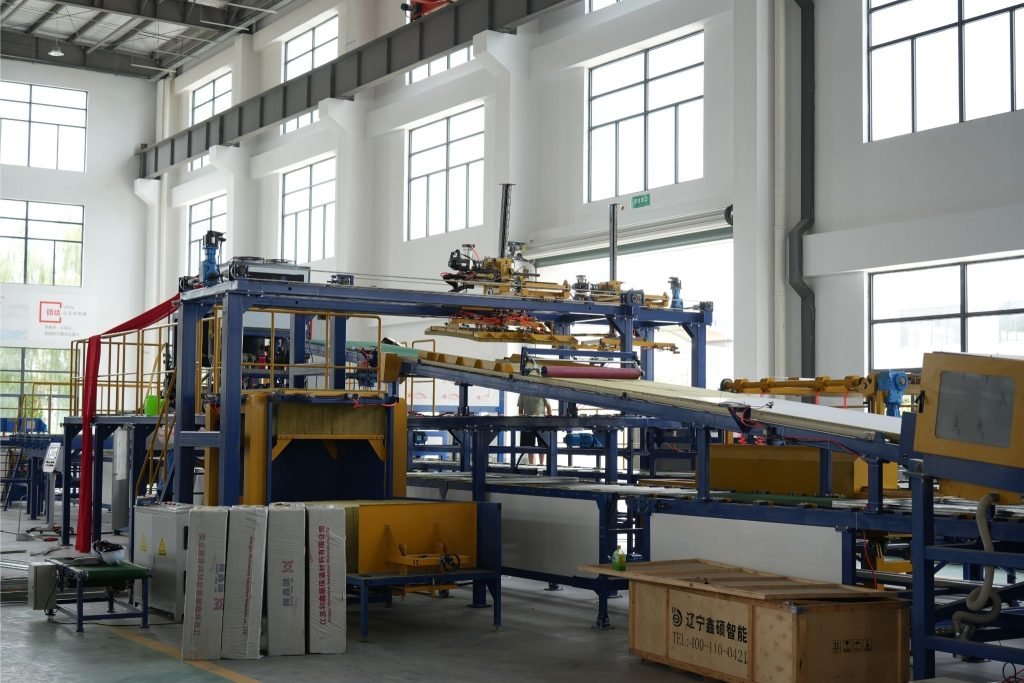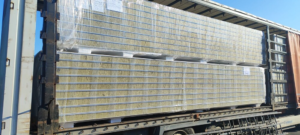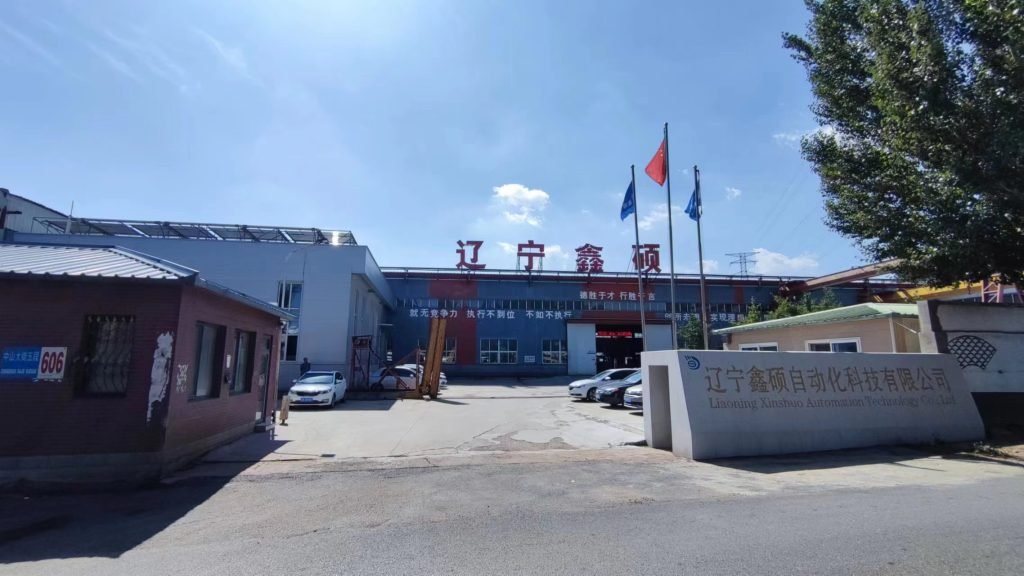In the ever-evolving construction industry, sandwich panels have gained significant attention for their efficiency, durability, and insulation properties. These panels, made up of two outer skins and a core material, have revolutionized building methods, offering cost-effective and energy-efficient solutions for various applications. However, creating high-quality sandwich panels requires state-of-the-art technology, which is where sandwich panel production lines come in.
A sandwich panel production line is a sophisticated system that manufactures these composite panels through automated processes. These production lines consist of several key components, each of which plays a crucial role in ensuring that the final product meets industry standards for insulation, durability, and strength. In this article, we will delve into the key components of a sandwich panel production line, their functions, and how they contribute to the overall manufacturing process.
The Key Components of a Sandwich Panel Production Line
A sandwich panel production line comprises several critical components working in tandem to produce high-quality sandwich panels. These components include unwinding units, coating systems, core material feeding systems, forming and lamination stations, cutting tools, and quality control systems.

1. Unwinding Units
The first step in the sandwich panel production process involves unwinding the metal coils that form the outer skins of the panel. These coils are typically made of steel, aluminum, or other metals and are unrolled using an unwinding unit. The unwinding process ensures that the metal is smooth, free from defects, and ready for further processing.
Table 1: Types of Materials Used for Outer Skins
| Material Type | Characteristics | Common Applications |
|---|---|---|
| Steel | Strong, durable, resistant to corrosion | Industrial buildings, warehouses |
| Aluminum | Lightweight, corrosion-resistant | Commercial buildings, facades |
| Stainless Steel | Resistant to high temperatures, long-lasting | Food processing facilities, medical buildings |
2. Coating Systems
After the metal sheets are unwound, they often undergo a coating process. This step ensures that the outer skins of the panels are resistant to corrosion, UV radiation, and other environmental factors. Common coating systems include pre-painting and galvanizing, which help increase the lifespan of the sandwich panels. The coating also provides aesthetic appeal, with a variety of colors and finishes available to meet design requirements.
Table 2: Coating Methods and Their Benefits
| Coating Method | Benefits | Common Uses |
|---|---|---|
| Pre-painted | Offers a variety of colors and finishes | Facade panels, roofing |
| Galvanized | Provides corrosion resistance | Industrial applications, cold storage |
| Polyester Coating | Enhances UV resistance and durability | Residential buildings, commercial facades |
3. Core Material Feeding Systems
The core material, which provides thermal and acoustic insulation, is a vital part of sandwich panel production. Core materials like EPS, PU, and mineral wool are fed into the production line through a specialized feeding system. The core material is carefully measured, pre-formed, and positioned between the outer skins during the lamination process. The feeding system ensures that the core material is evenly distributed, achieving uniform insulation properties across the entire panel.
Table 3: Types of Core Materials and Their Insulation Properties
| Core Material | Thermal Conductivity (W/m·K) | Acoustic Insulation (dB) | Common Applications |
|---|---|---|---|
| EPS (Expanded Polystyrene) | 0.033 – 0.037 | 20 – 30 dB | Residential and commercial buildings |
| PU (Polyurethane) | 0.022 – 0.025 | 25 – 35 dB | Cold storage, refrigeration |
| Mineral Wool | 0.035 – 0.045 | 30 – 40 dB | Fire-resistant panels for industrial buildings |
4. Lamination and Pressing Stations
The lamination and pressing stations are at the heart of the sandwich panel production process. This is where the core material is sandwiched between the outer skins and bonded together. The lamination process typically involves applying an adhesive to the metal sheets before the core material is added. After this, the panel passes through a pressing system where heat and pressure are applied to ensure a strong bond between the materials.
In the case of panels made with PU foam, the core material is injected in liquid form and expands between the skins during the pressing process. The resulting panel is then left to cool and solidify, ensuring the foam remains firmly in place.
Table 4: Lamination Process and Materials
| Lamination Step | Materials Involved | Function |
|---|---|---|
| Adhesive Application | Metal skins, adhesives | Ensures strong bonding between skins and core material |
| Pressing | Metal skins, core material (foam or board) | Bonds materials together, creates structural integrity |
| Cooling | Foam (for PU panels) | Allows the foam to solidify and ensure a durable core |
5. Cutting and Shaping Stations
After lamination, the continuous sandwich panel is passed through a cutting and shaping station. Automated cutting tools are used to slice the panels to the desired length and shape, ensuring uniformity and precision. Panels can be cut into standard sizes or customized profiles, depending on the specific requirements of the construction project.
The cutting and shaping process also involves creating grooves or interlocking features in the panel edges, allowing for easy installation. Automated systems ensure high-speed, high-accuracy cutting, improving the overall production rate.
Table 5: Common Cutting Methods in Sandwich Panel Production
| Cutting Method | Description | Advantages |
|---|---|---|
| Rotary Cutting | Uses a rotating blade to cut the panels | Ideal for continuous production, smooth cuts |
| Guillotine Cutting | A straight-edge cutting system | High precision, perfect for custom shapes |
| Laser Cutting | Uses a focused laser to cut panels | Provides intricate shapes with minimal waste |
6. Quality Control and Inspection Systems
Quality control is a crucial aspect of sandwich panel production. Throughout the manufacturing process, the panels are inspected to ensure they meet the required standards for thermal insulation, mechanical strength, fire resistance, and aesthetic appearance. Automated inspection systems are used to check for defects such as cracks, dents, and uneven coating. Thermal conductivity and fire resistance tests are also conducted to ensure the panels meet building regulations.
Table 6: Quality Control Checks in Sandwich Panel Production
| Quality Check | Test Method | Purpose |
|---|---|---|
| Thermal Insulation | Thermal conductivity testing | Ensures efficient insulation properties |
| Strength Testing | Compression or bending tests | Confirms the mechanical strength of the panels |
| Fire Resistance | Fire exposure tests | Verifies the fire-resistant qualities of the panels |
| Visual Inspection | Manual or automated defect scanning | Identifies any visual defects or irregularities in the panels |
7. Packaging and Shipping
Once the sandwich panels have passed all inspections, they are packaged and prepared for shipment. Packaging is essential to protect the panels from damage during transportation. Panels are often stacked and wrapped in protective materials to ensure they are safe from environmental factors and handling stresses.
Shipping logistics are also streamlined in the production line, ensuring that large quantities of panels can be efficiently transported to construction sites or distributors. Packaging methods vary depending on the destination, with certain packaging methods designed to prevent moisture or contaminants from damaging the panels.
Conclusion
The sandwich panel production line is a sophisticated system that combines automation, precision, and efficiency to produce high-quality sandwich panels for the construction industry. From unwinding the outer skins to quality control and packaging, each component of the production line plays a crucial role in ensuring the final product meets the required standards for insulation, durability, and strength.
As demand for energy-efficient and sustainable construction continues to grow, sandwich panels have become an essential building material. Our company specializes in manufacturing state-of-the-art sandwich panel production lines that are designed to meet the evolving needs of the construction industry. If you’re interested in learning more about our production lines or require a custom solution, feel free to contact us today!



